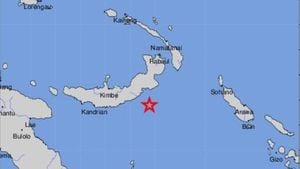The Vietnamese real estate market is experiencing notable trends as we enter early 2025, driven by rising living costs and changing investor strategies. With mounting pressures from soaring prices, many investors are relocating their focus to suburban areas where affordability remains comparatively feasible.
Investors are increasingly making moves toward land acquisition outside urban hubs such as Hanoi and Ho Chi Minh City. Following the Lunar New Year, individuals like Mr. Trần Văn B. began exploring properties on the outskirts, such as Chương Mỹ and Mỹ Đức, where prices are relatively lower compared to regions like Hoài Đức.
Mr. B.’s story is indicative of broader trends. He recently opted for a 162 square meter plot near hồ Quan Sơn at approximately 25 million VND per square meter, totaling roughly 4 billion VND. The decision reflects the changing dynamics, as securing similar properties within urban areas has become significantly more challenging.
Similarly, Mr. Nguyễn T. expanded his investment strategy to include five plots of land in Vĩnh Phúc, with each plot priced over 1 billion VND. "For this amount of money, investing within Hanoi is nearly impossible," he remarked, pointing out the common sentiment among investors migrating toward suburban potentials.
Market indicators show rising activity in land purchases, particularly for subdivisions priced under 1-2 billion VND. Analysts expect continued interest as municipalities prepare to release updated land pricing lists, with anticipated increases likely to ignite demand.
According to Batdongsan.com.vn, interest is now dispersed across suburb regions like Hà Đông and Sóc Sơn, validating the shift away from city-centric investments. The Vietnam Association of Real Estate Brokers (VARS) reports a significant amount of inquiries about suburban plots fueled by the central areas' rising real estate costs.
"Investors, both individuals and organizations, are rapidly shifting their attention from city centers to regional cities and the outskirts, leveraging the growing infrastructure investments there," said VARS. On the ground, the rush to purchase land is notable, particularly during recent auctions, with prices reaching as high as 120 million VND per square meter.
The trend is not only limited to land buying. Investors are seeking new apartments but encountering high prices even outside of main urban locales. Ms. Vân Linh, who previously invested within the city, reflected on her recent shift to suburban opportunities, stating, "Affordability is key, and the benefits of investing beyond the city limits now outweigh the urban appeal for many prospective buyers."
During her search for two- to three-billion VND apartments, Linh found prices surged within urban hotspots. The disparity between the high demand and tight supply within city markets has intensified scrutiny on potential investments, driving her attention to areas like Bình Dương.
Bình Dương's infrastructural advantages and burgeoning industries made it appealing, leading her to the residential project Phú Đông Sky Garden. Despite higher pricing points, she identified potential for rental yield and value appreciation, particularly as urbanization continues to expand.
These adaptive strategies highlight changing attitudes among investors. The allure of quick gains through speculative purchasing is waning as stability and sustainability become focal points for current investment decisions. Investors now lean toward long-term returns, prioritizing properties adhering to zoning laws and offering amenities beneficial for future residents.
Mr. Lưu Quang Tiến of Dat Xanh Services claims, "There is growing interest among buyers for residential properties capable of stable cash flows, marking significant shifts from short-term speculation to genuine long-term investment prospects." The mentality behind these acquisitions increasingly revolves around enhancing living standards as much as potential financial gains.
Overall, the 2025 real estate outlook reflects a cautious yet opportunistic window, where suburban plots harmonize with anticipated infrastructure development. This new chapter within Vietnam’s real estate narrative may set the stage for sustained growth, driven by the very principles of practicality and demographic evolution.
Investors must diligently assess sites for potential legal issues and infrastructural support. While many areas promise returns, ensuring the product fits market dynamics remains imperative as the country progresses toward enhanced urban planning and development.



